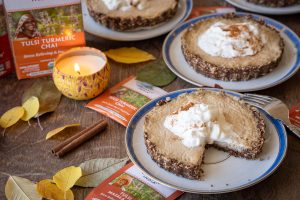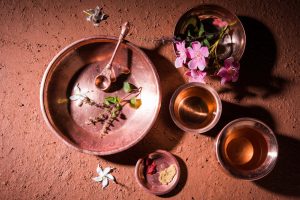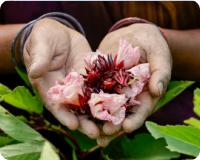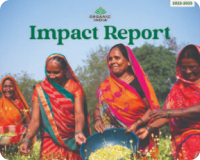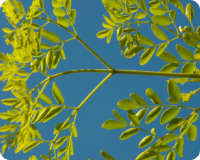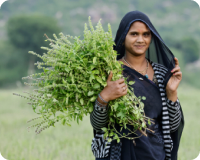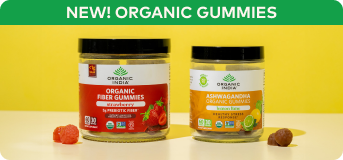

Section

Back
6 Tips for Choosing Eco-Friendly Tea you Need to Know
04/05/2022 |
Better World, Conscious Healthy Living
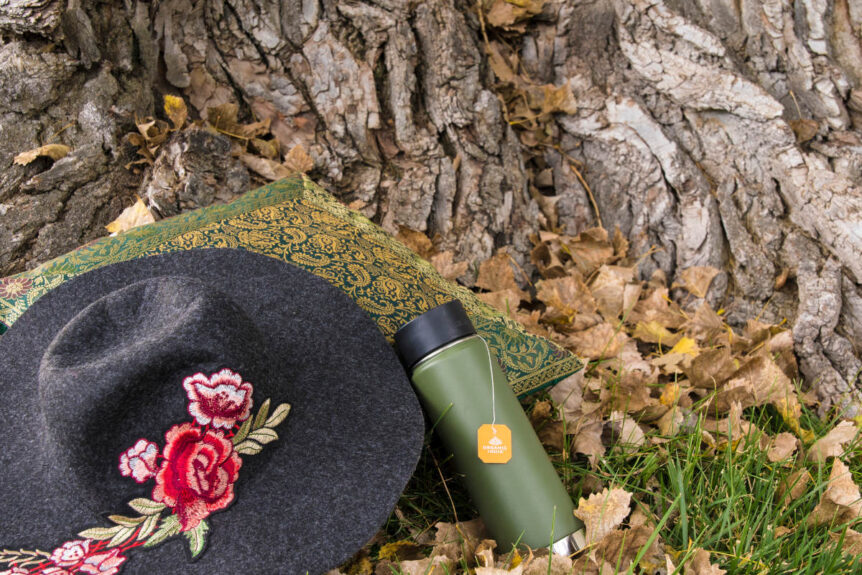
Of all the important things to focus on when it comes to the environment, eco-friendly tea isn’t usually at the top of most people’s list.
However, did you know tea is the most consumed beverage in the world after water, with Americans consuming over 3.8 billion gallons per year? Tea growing and production is also one of the leading sources of income for poor and developing countries. And though this has the potential to be a good thing, according to a UN report tea companies have a reputation for under-paying and mistreating their workers, keeping them stuck in the poverty cycle.
In addition, like many other crops grown in developing countries, tea plantations require open fields which can lead to the legal or illegal deforestation of critical ecosystems, and excessive use of harmful pesticides. DDT for example, which was banned in the United States, is still used in some countries for agriculture and to control malaria, and has been found to accumulate in tea plants.
The bottom line is that choosing eco-friendly tea is incredibly important to the health of people and our planet.
WHAT MAKES TEA ECO-FRIENDLY?
Unfortunately, a truly eco-friendly tea can be hard to come by in mainstream supermarkets and even health food stores. The good news is, there are simple criteria you can use to identify an eco-friendly tea company you can trust.
Not every company will meet all these criteria. However, once you understand how each aspect affects the environment, communities, and your personal health you will have the information you need to make the best choice based on your circumstances and values.
6 TIPS FOR CHOOSING ECO-FRIENDLY TEA
#1: CHOOSE PLASTIC-FREE MESH TEA BAGS
Believe it or not, many commonplace and high-end teas are packaged in tea bags that contain polypropylene, a type of plastic. This means, every time you pour boiling water over your tea bag it releases millions of microplastics into your brew. Plus, when the tea bag is disposed of or composted, that plastic goes back into the environment creating a vicious cycle. But rest assured, at ORGANIC INDIA we do not have plastic in our tea bags.
As a general rule, there are several ways to avoid plastic, like looking for bagged teas made with only 100% paper—preferably unbleached paper. If you’re unsure, ask the manufacturer as many types of paper tea bags are held together using polypropylene. Also, always avoid any tea bags that have a shiny, or nylon-like bag as this is a sure sign (but not an exclusive sign) of plastic. Learn more about microplastics in tea here. You can also choose loose leaf teas which eliminate paper and plastic waste. Which brings us to our next tip…
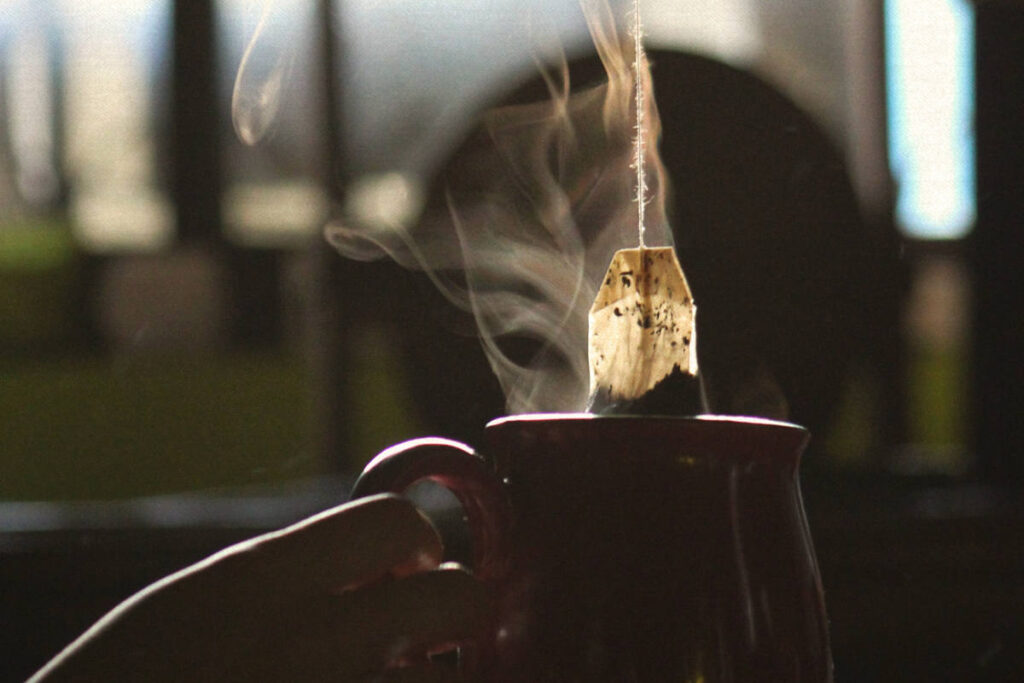
#2: GO TRADITIONAL WITH LOOSE LEAF TEAS
Tea is thousands of years old but tea bags are a relatively new invention. The benefits of loose leaf tea are that you can control the strength of your tea, it’s often more affordable than bagged tea, it creates less waste, and there’s no risk of microplastics or paper processing chemical residue in your tea bags.
Plus, preparing loose leaf tea is easy once you have the right set up. Things like reusable cotton tea bags, tea pots with built-in tea strainers, and stainless-steel tea balls all keep messes and waste to a minimum while maximizing your tea experience.
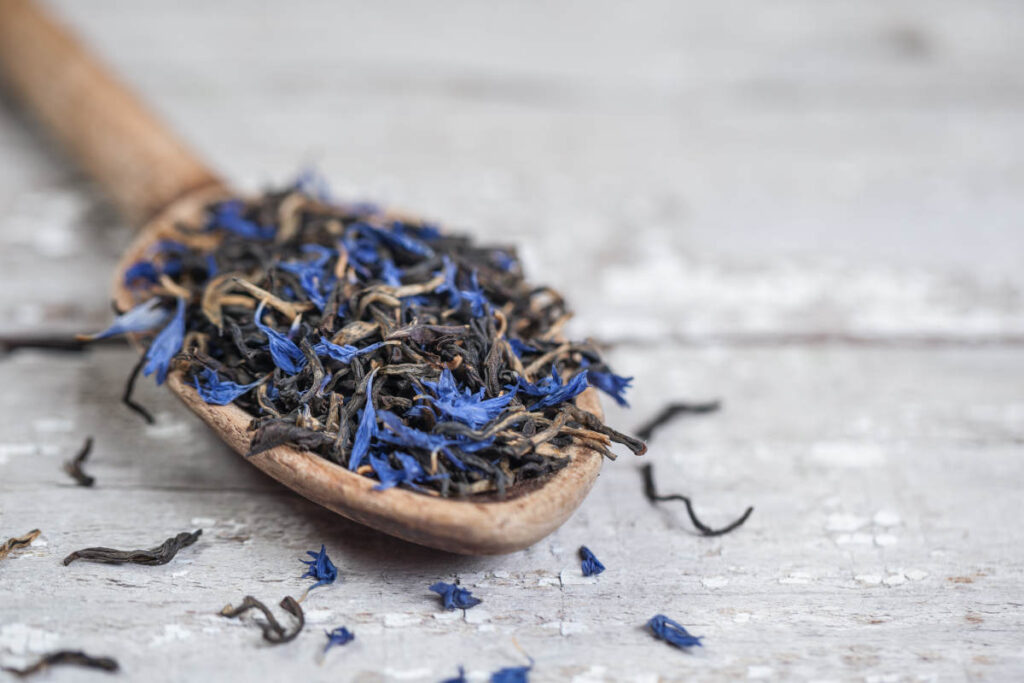
#3: SUPPORT COMPANIES THAT GROW TEA ORGANICALLY AND REGENERATIVELY
Choosing organic tea is a great place to start in supporting sustainable farming and reducing pesticide, herbicide, insecticide use. However, if you want to take it to the next level, look for organic tea grown using regenerative agriculture practices.
Regenerative agriculture focuses on healing and nurturing the soil through practices such as low- or no-till growing, composting, rotational grazing, and extensive use of cover cropping. All this not only benefits the plants, eco-systems, and enhances biodiversity; it also conditions the soil to draw down and retain large amounts of carbon, which would otherwise be released via conventional growing practices (especially tilling).
Since our company’s inception, we have been committed to regenerative agriculture practices. Thus, we source all our teas and herbs from our own organic regenerative agriculture farms in India, and are currently pursuing Regenerative Organic Certification (ROC) in 2022. You can learn more about our commitment to regenerative ag here. For a more thorough understanding of how regenerative agriculture addresses climate change, we highly recommend the documentary: Kiss the Ground (it may be one of the most important films you ever see!).
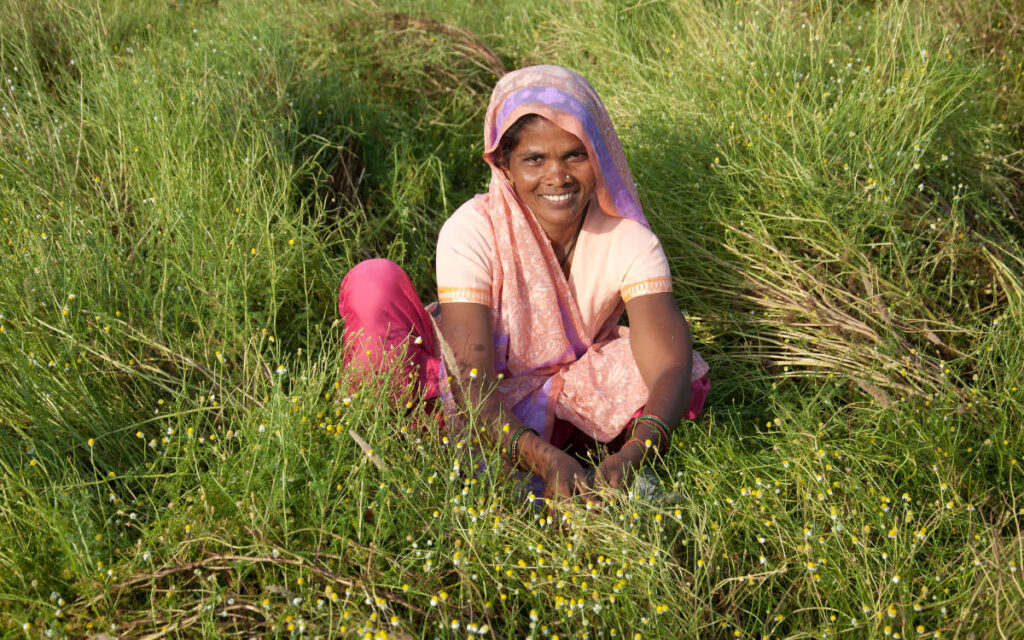
#4: CHOOSE COMPANIES THAT INVEST IN GREEN TECHNOLOGIES AND GIVING BACK
A truly eco-friendly tea company doesn’t just focus on the ingredients in its teas. They look at how their business and manufacturing facilities impact the environment, their employees, and the surrounding communities. Two designations that reveal a company’s values in this vein are LEED- (Leadership in Energy and Environmental Design), and B-Corp-certification.
LEED certification requires that companies be environmentally responsible in their workplace design and culture. Some examples include: site selection and development, water and energy use, green construction products, finishes and furnishings, waste stream management, indoor environmental quality, innovation in sustainable design and construction.
B-Corp certification, requires and encourages businesses to reach the highest level of verified social, environmental, and economic performance.
You can learn more about our Platinum-LEED certified and B-corp-certified tea facilities here.
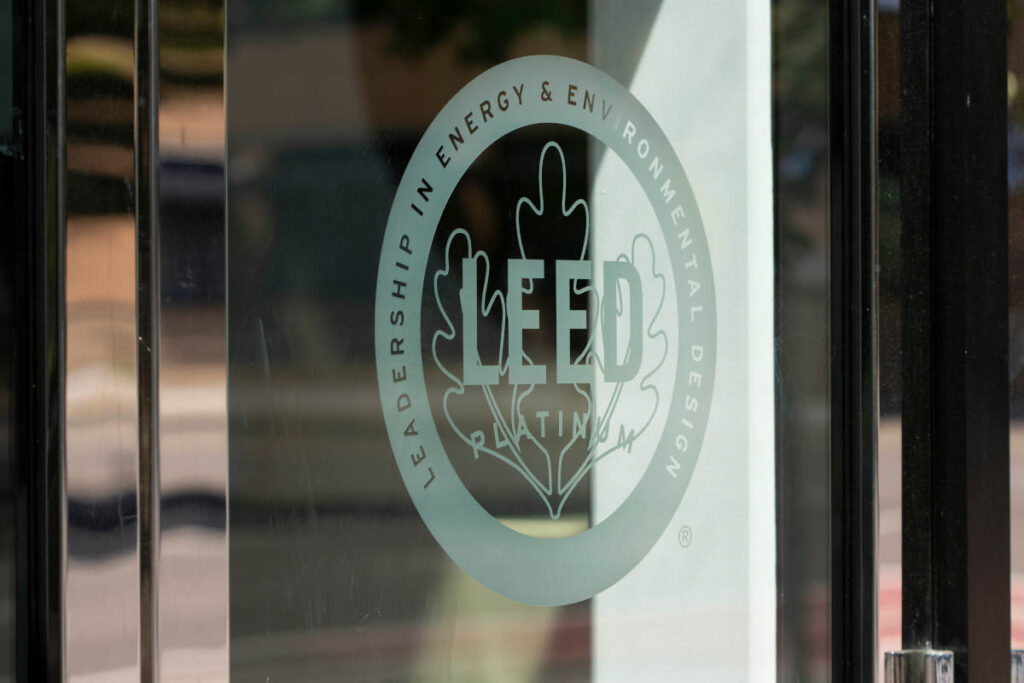
#5: NON-GMO VERIFIED
Generally, pure, unflavored teas do not contain genetically modified crops like corn, soybeans, or rapeseed. However, flavored teas may contain genetically modified foods such as papaya, alfalfa, sugar from GMO sugar beets for example, or other GMOs like soy lecithin, used in “natural” or “artificial” flavoring enhancements.
The topic of why to avoid GMOs is a gigantic one. In a nutshell, the reasons to avoid them are: these crops do not exist in nature, the seeds are patented which often puts farmers (especially those in developing countries) in a very precarious position legally and financially, the seeds are often heavily treated with toxic pesticides (like glyphosate) in which they’ve been genetically altered to withstand large amounts, they’ve been shown to do harm, and we don’t know the long-term effects on people or the planet.
To avoid GMOs (which do not have to be labeled in this country), look for organic teas, unflavored teas or teas flavored with only pure herbs, fruits, and spices—not “natural” or “artificial” flavors, and those labeled “Non-GMO Project-verified”.
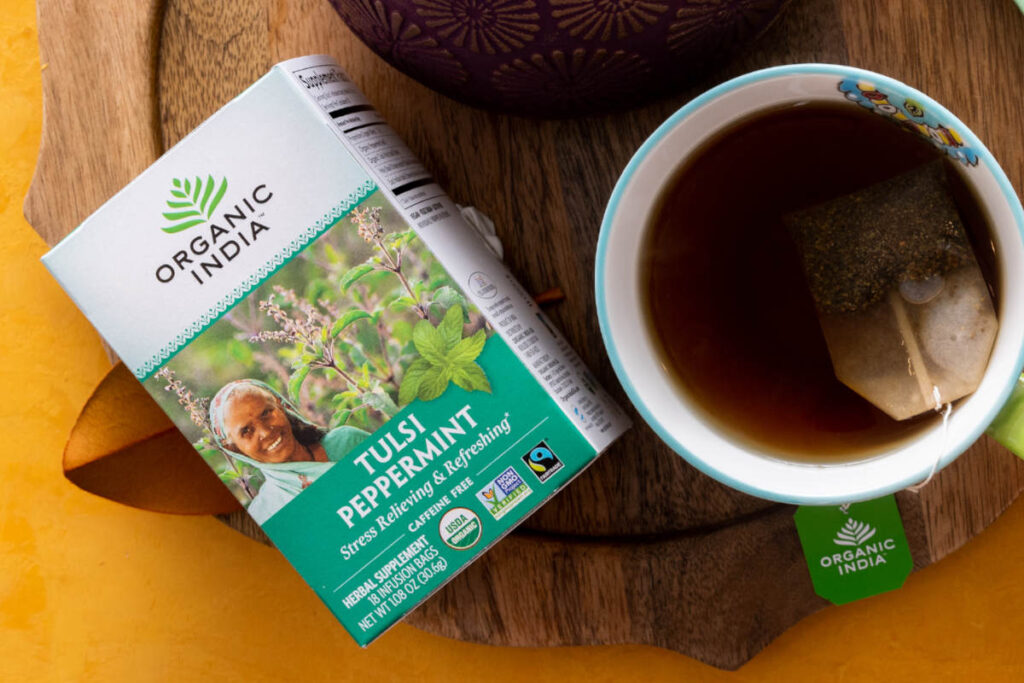
#6: FAIR PRACTICES
Due to the popularity of tea growing in developing countries, it’s especially important to pay attention to a company’s trade practices. Fair trade certification, which ensures supplies are getting at least 15% more than their regular selling price, is a good thing to look for. However, many companies (like us!) take it one step further by supporting our farmers directly with clean water, health care, and fair wages. Also, just because a company is not “certified-fair-trade” (which is very detailed and expensive to achieve) does not mean they’re not going above and beyond for their suppliers. When in doubt, look into the company’s story and vision to see how they support fair and equitable trading with their suppliers.
Learn more about our Fair practices here.
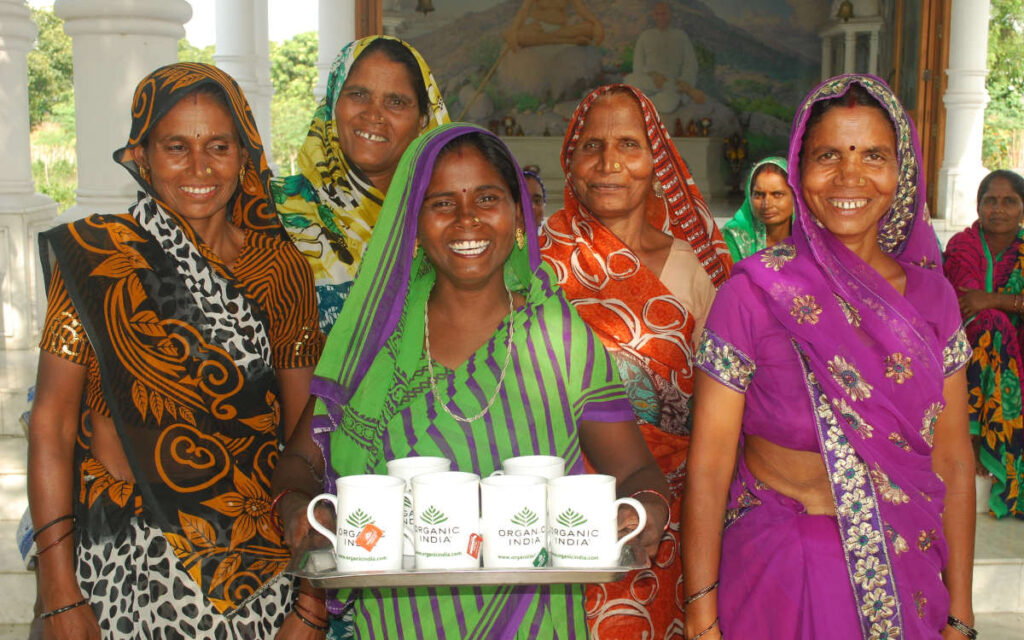
IMAGINE HOW THE WORLD WOULD CHANGE IF EVERYONE DEMANDED ECO-FRIENDLY TEAS?
It may seem like a small thing, but given that tea is the #2 most popular beverages in the world, applying even two or three of these criteria to your future tea purchases will make a world of difference. Share this information with another tea-lover, and we all have the potential to make a significant impact on creating a healthier planet. Power to the tea lovers!
While you’re here, learn about the fascinating history of the teatime ritual and its benefits.
